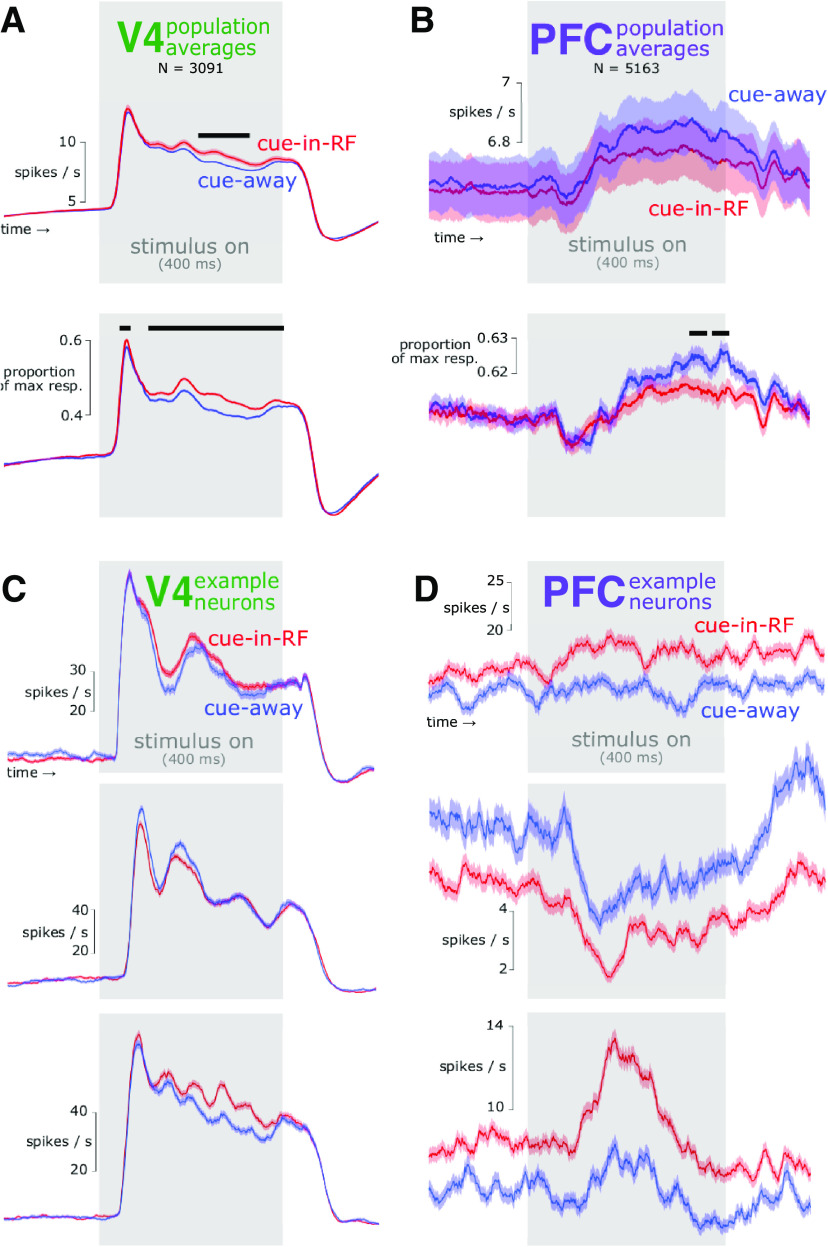Figure 2.
Firing rate time courses in V4 and PFC under different attention conditions. A, Population average for V4. Top, Raw firing rate. Bottom, Normalized firing rate. Neurons in V4 generally responded more vigorously in response to an attended stimulus than an unattended stimulus, particularly during the late, sustained portion of the response. Baseline modulations were not observed on average. Black bars over data indicate time points with significant differences between cue-in-RF and cue-away conditions (independent samples t test, p < 0.05). B, Population average for PFC. On average, neurons in PFC responded slightly more vigorously near the end of the stimulus interval when attention was directed ipsilaterally compared with when it was directed contralaterally (bottom). C, PSTHs for example individual neurons in V4 illustrating diversity of attention modulations. Unlike the population average (A), some individual neurons showed baseline modulations (top), and/or more vigorous responses to unattended stimuli (middle). Other neurons more closely resembled the population average (bottom). The time course of attention modulation varied across neurons in the population, and changed magnitude or sign over time for individual neurons. These observations suggest a dynamic code for attention in V4. D, PSTHs for example individual neurons in PFC. In PFC, the effect of contralaterally directed attention on firing rates was much more consistent across time than in V4, suggesting a more stable code for attention. Responses to nontarget stimuli to which animals correctly withheld responding are shown. Shading represents ±1 SEM.

